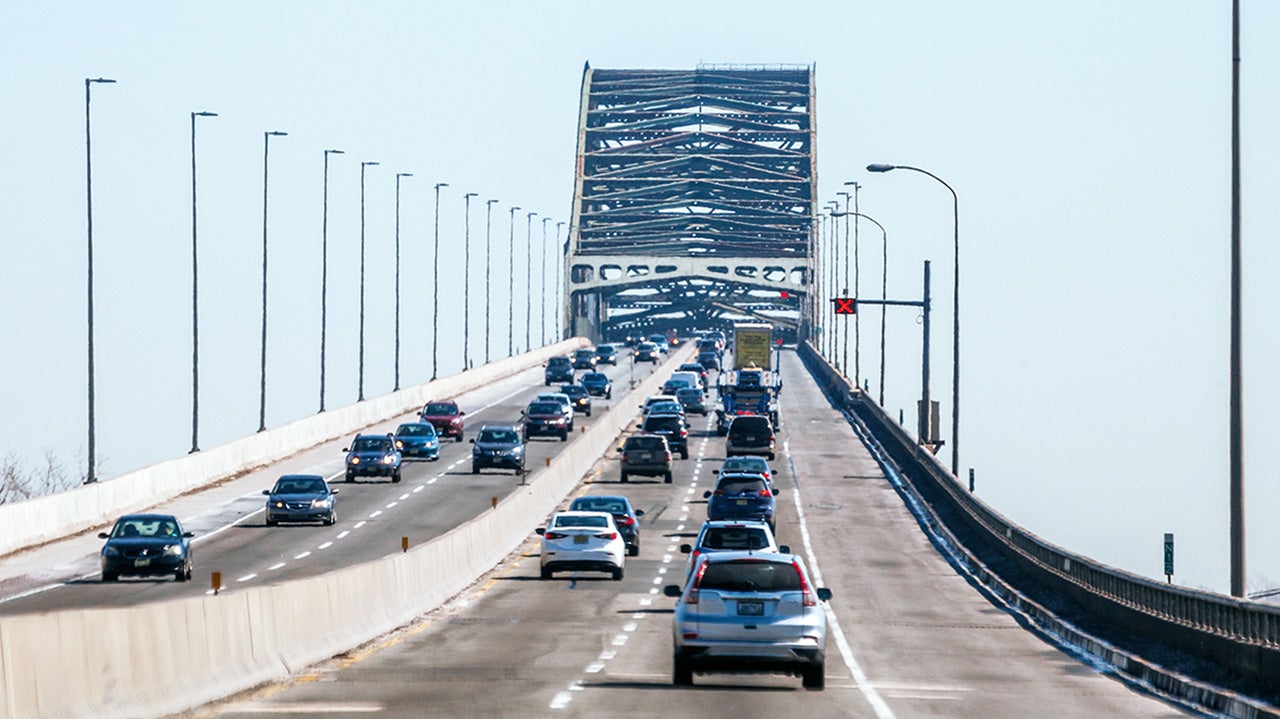Auto insurance rates are increasing in 2022. Here’s how to prepare.

Like nearly every purchase consumers make right now, the average cost of car insurance will probably rise for many drivers throughout 2022. Nationally, car insurance rates are increasing by an average of 4.9 percent, according to approved rate filing data from S&P Global Market Intelligence. These rate changes stand to affect more than 62.5 million policyholders across the country. For policyholders in some states and with certain auto insurers, rate increases could be much steeper. Geico is raising rates in seven states in just the month of June, with rate hikes also taking effect on policy renewals mid-August. Nearly half of those increases are happening in Virginia. State Farm also received approval for more rate hikes, 17 in total, with increases soon to happen in Kentucky, North Carolina and South Carolina. These are far from the only companies increasing rates; across the board, most drivers will pay more for car insurance this year.
Because car insurance is a required expense for vehicle owners in most states, premium increases can be surprising and financially challenging, especially for drivers who already pay higher-than-average rates due to insuring teens, having accidents or tickets on their records, or living in an area with a high cost of living. Bankrate explains why rates are likely to increase for many drivers, shows you how to prepare for a potential rate hike and lays out strategies you can use to help offset these increases.
Are auto insurance rates higher in 2022?
According to Steve Ellis, an Assistant Vice President and Claims Field Manager,
“The overall cost of doing business is increasing for practically all companies in the U.S., including insurance companies. And because the ‘cost of doing business’ is part of the calculation of premiums, consumers can expect, in general, higher premiums in 2022.”
A number of economic and societal influences are behind these potential rate increases, including inflation, supply chain disruptions and changes in driving habits.
However, keep in mind that rates are highly personalized. Your premium depends on your individual rating factors like the type of vehicle you drive, your driving and claims history, and the coverage types and levels you choose. Mark Friedlander, the Director of Corporate Communications at the Insurance Information Institute (Triple-I), notes that “even if you don’t make a claim, an increase in the volume or cost of claims from other drivers can boost auto insurance rates for all consumers in your city or state.” While we predict that, in general, auto insurance rates will increase in 2022, the amount of increase you see (if any) will depend on your unique situation.
Why are auto insurance rates increasing?
Car insurance rates are calculated based on a number of underlying factors. Individually, your age (in all states except Hawaii and Massachusetts), gender (in most states), driving history, vehicle type and coverage choices impact your premium. Additionally, broader factors also impact rates, such as if states pass revised insurance laws, the likelihood of claims occurring in certain areas or if vehicle repair costs increase.
Inflation
Perhaps the biggest driver of higher 2022 car insurance premiums is the same thing that is driving up costs across the board — inflation. Between June 2021 and June 2022, the Consumer Price Index (CPI) rose 9.1 percent. This means that, on average, we are spending 9.1 percent more than we were a year ago for the same goods and services. While auto insurance is certainly not the most drastic increase — fuel, energy commodities and airline fares take the top spots — the increase still has the potential to further strain consumers’ wallets.
Inflation pounded the new and used vehicle markets in 2021, and while these numbers have begun to stabilize, they’re nowhere near the level they were prior to our current inflationary situation. The price for new cars and trucks rose by 11.4 percent between June 2021 and June 2022, while the used car and truck market saw a 7.1 percent increase. Vehicles are also much more complex than they used to be, which adds to the overall cost of ownership. Even small accidents can cause hundreds or thousands of dollars worth of damage to delicate electronics that require specialized repairs.
Vehicle costs aren’t the only thing struck by inflation. The cost of healthcare is also on the rise. The Centers for Medicare & Medicaid Services reports that healthcare spending increased 9.7 percent in 2020, the most recent year with available data. This means that when someone is injured in a car accident, the resulting medical costs are greater than what they were in previous years.
Because car insurance is designed to pay for the costs after an accident — including both property damage and medical costs — anything that raises these costs is likely to raise rates. Insurers need to make sure they have enough funds to pay claims, so when inflation hits, car insurance rates are affected.
You may be tempted to lower your coverage to save money, but insurance professionals advise against this strategy. Car insurance is designed to protect your finances in the aftermath of accidents, and lowering your coverage could leave you with higher out-of-pocket bills. In an inflationary economy where nearly everything costs more, proper car insurance could help you hang on to more of your hard-earned dollars if you file a claim.
Supply chain disruptions
The last few years have created a perfect storm to disrupt supply chains. COVID-19 shutdowns caused decreasing demand in certain industries in 2020. With fewer people on the road and cars generally getting less use, there was a decrease in the need for vehicle parts. Then, an ice storm in February 2021 knocked out plants and factories across the South, the Suez Canal was blocked for six days in March 2021 and people began to return to a more normal level of driving, which caused increased demand but decreased supply. The auto industry has been one of the hardest-hit sectors. “Parts are more expensive, labor is more expensive and repair costs overall are more expensive,” Ellis says.
Perhaps the most evident of these vehicle-related supply chain disruptions was the difficulty in obtaining semiconductors. Semiconductors, often called “chips,” are used in a wide array of vehicle applications, including driver assistance systems, entertainment systems and electronic mechanisms. In December 2021, over 50 business leaders — including executives from American Honda Company, Ford Motor Company, General Motors and Toyota Motor North America — sent a letter to Congress urging the governing bodies to encourage the U.S. to create its own semiconductor research, design and production methods, to increase the supply of semiconductors and available jobs.
Labor shortages
Along with supply chain issues making parts harder to find, labor shortages have made skilled workers harder to find as well. The Bureau of Labor Statistics reports that unemployment is at 3.6 percent as of June 2022 — nearly back to the pre-pandemic level of 3.5 percent. However, many companies are still struggling to find workers. The “Great Resignation” has pushed workers to reconsider their career paths, with many labor shortages caused not by unemployment but by workers switching jobs.
Fewer workers can contribute to rising insurance costs. When fewer people do any given job, including vehicle repair and healthcare jobs, pay rates often increase as an incentive. For example, perhaps a mechanic used to repair bumpers for $100. Now, that same mechanic is working longer days and taking less time off to make up for a reduced workforce. To compensate, the mechanic now charges $300 to cover the same repair. Because the repair costs more, insurance companies may increase rates to prepare for higher claims expenses.
Changing driving habits
As we hunkered down at the start of the COVID-19 pandemic in early 2020, the country saw an unprecedented reduction in driving levels. Many households stopped commuting to work, school and activities. Streets were quieter and accidents were fewer. As a result, many insurance companies refunded some premiums to policyholders.
However, Friedlander points out that
“In 2021, we saw a return to pre-pandemic driving patterns which led to a significant increase in auto insurance claims and accident severity. In fact, the National Highway Traffic Safety Administration reported an 18.4 percent increase in fatal crashes during the first six months of 2021 compared to the first six months of 2020 — the highest percentage increase on record.”
This pendulum swing of driving habits may mean insurance carriers need to rebuild their claim reserves — the money set aside and earmarked for paying losses — which could mean higher premiums.
Are all auto insurance policies affected?
The premium increases you see on your own policy will depend on a number of factors, including the state you live in, your driving history and the type of vehicle you own. Not all companies are increasing rates in all states. For example, USAA is lowering its rates by an average of about 1 percent for just over 100,000 policyholders in Massachusetts, according to data from S&P, and about 47,000 Tennessee policyholders with Nationwide could see a modest .4 percent decrease. Progressive was approved for nine rate decreases, dropping policyholders’ total premiums by over $13 million. However, one of the most important factors when considering rate increases is your coverage level.
Rate increases can impact your policy regardless of coverage types and levels, but each factor impacts your premium differently. For example, the factors that increase vehicle costs, like inflation and supply chain issues, are likely to increase the cost of your property damage liability and collision coverage because these coverage types deal with paying for vehicle damage. However, rising medical costs could affect the cost of your bodily injury liability coverage and medical payments or personal injury protection (PIP) coverage. Each part of an auto policy is priced separately and thus affected by different impacts of rate increases.
Minimum coverage policies only include the coverage types and levels that are required by your state. Because these coverage limits offer very little financial protection, they generally cost less than a policy with higher limits or full coverage. This means that rate increases might not seem as drastic on minimum coverage policies compared to policyholders with full coverage policies or higher limits.
Is it possible to avoid increased insurance costs?
Bracing for a rate increase may seem stressful, but having the knowledge that your auto premium could go up can help you prepare and act quickly.
- Review your current policy: The first step in prepping for a premium change is understanding your current insurance policy. Reviewing your policy and knowing your coverage types, limits, discounts and premium can help you learn about your policy. If you aren’t sure how to analyze your policy, you might want to talk to an agent. Be on the lookout for your policy’s effective dates and see if your next renewal is available. If so, check the premium on that policy to see how your rate will be affected in 2022.
- Shop for a new carrier: Friedlander says that “comparison shopping is essential to obtain the best cost for the amount of coverage that fits your needs.” If you get your policy renewal and see that your premium has increased, you may want to first contact your car insurance company to see if you might be able to adjust your policy or add extra discounts to lower rates. For example, if you’re still driving less in 2022 than you were in previous years, could you earn an annual mileage discount? If you can’t offset your premium increase, you might want to shop around. While most car insurance companies sell the same types of coverage, each company also has its own underwriting rules, discounts, rating algorithm and policy features. Getting quotes from a few carriers might help you find a lower rate and a policy that fits your needs. You may even earn an early shopper discount if you switch in advance of your next renewal.
- Take advantage of discounts: Discounts can be one of the easiest ways to lower your premium. Reviewing your current discounts might help you identify areas where you could save. If you’re shopping for new coverage, you could look for a company that has several discounts that might be available to you.
- Check your other policies: Don’t forget about any other insurance policies you might have. Bundling your major policies, such as home and auto, with one carrier could potentially help you save money on both. Even if you can’t offset your auto insurance increase, you may be able to find savings on your homeowners insurance or renters insurance policy. Reviewing your entire insurance portfolio is a good way to make sure you are properly insured but not overpaying for coverage.
Will auto insurance prices go back down?
They could. Car insurance rates rarely, if ever, remain the same from year to year. While we expect rates to increase on a broad level in 2022, premiums may drop again in the future as inflation returns to lower levels and supply chain issues are resolved.
Your individual premium is based on your personal rating factors, so the degree to which you are affected by the 2022 rate increases will vary. For example, you may see a rate decrease despite overall average rates rising. Your geographic location may have had a reduction in car accidents in the past year, resulting in fewer claims, or perhaps an at-fault accident or ticket you had in the past is old enough to no longer be surcharging on your policy, resulting in a premium reduction. Talking with an agent or company representative about your unique insurance circumstances is likely the best way to understand how your policy is priced.
Should your rate increase substantially, insurance experts and financial advisors agree that it’s still the best course of action to keep your car insurance policy in force. You may be able to work with an agent to develop a strategy to lower your premium to a more acceptable level, but canceling your policy outright could put you at risk for high out-of-pocket costs should you get into an accident. Staying aware of your coverage needs and understanding your policy can help you make sure you have the right financial protection for your lifestyle and budget.
Learn more
You may also like

How to get car insurance for new drivers

Car insurance rates predicted to increase by 7% in 2025




